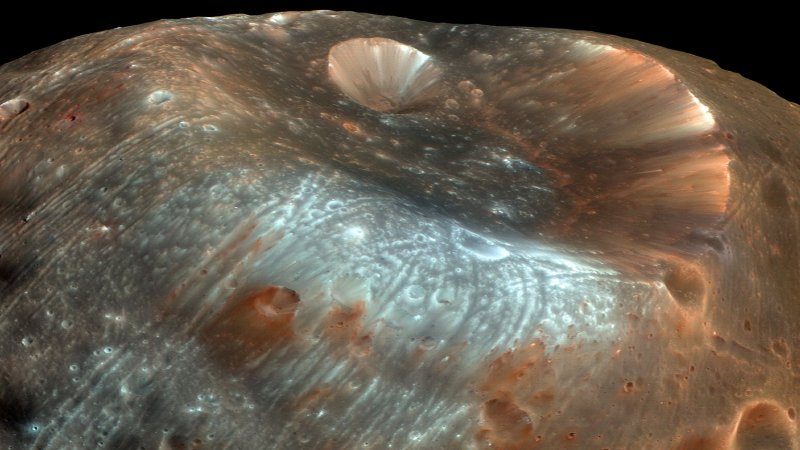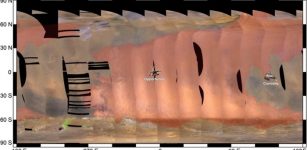Ancient Shells Reveal Our Days Were Half-Hour Shorter 70 Million Years Ago
Don Wood – MessageToEagle.com – Earth turned faster at the end of the time of the dinosaurs than it does today, rotating 372 times a year, compared to the current 365, according to a new study.
This means a day lasted only 23 and a half hours.
The ancient mollusk, from an extinct and wildly diverse group known as rudist clams, grew fast, laying down daily growth rings. The new study used lasers to sample minute slices of shell and count the growth rings more accurately than human researchers with microscopes.
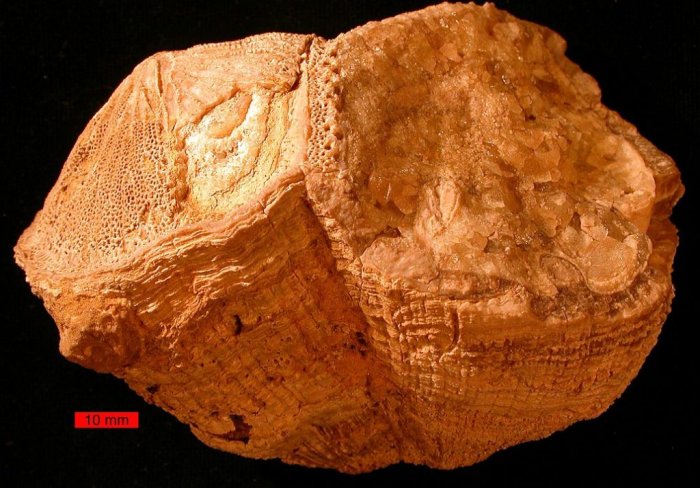
Fossil rudist bivalves (Vaccinites) from the Al-Hajar Mountains, United Arab Emirates. Credit: Public Domain
The growth rings allowed the researchers to determine the number of days in a year and more accurately calculate the length of a day 70 million years ago. The new measurement informs models of how the Moon formed and how close to Earth it has been over the 4.5-billion-year history of the Earth-Moon gravitational dance.
“We have about four to five datapoints per day, and this is something that you almost never get in geological history. We can basically look at a day 70 million years ago. It’s pretty amazing,” said Niels de Winter, an analytical geochemist at Vrije Universiteit Brussel and the lead author of the new study.
Climate reconstructions of the deep past typically describe long term changes that occur on the scale of tens of thousands of years. Studies like this one give a glimpse of change on the timescale of living things and have the potential to bridge the gap between climate and weather models.
Ancient Reef-Builders
The new study analyzed a single individual that lived for over nine years in a shallow seabed in the tropics—a location which is now, 70-million-years later, dry land in the mountains of Oman.
Torreites sanchezi mollusks look like tall pint glasses with lids shaped like bear claw pastries. The ancient mollusks had two shells, or valves, that met in a hinge, like asymmetrical clams, and grew in dense reefs, like modern oysters. They thrived in water several degrees warmer worldwide than modern oceans.
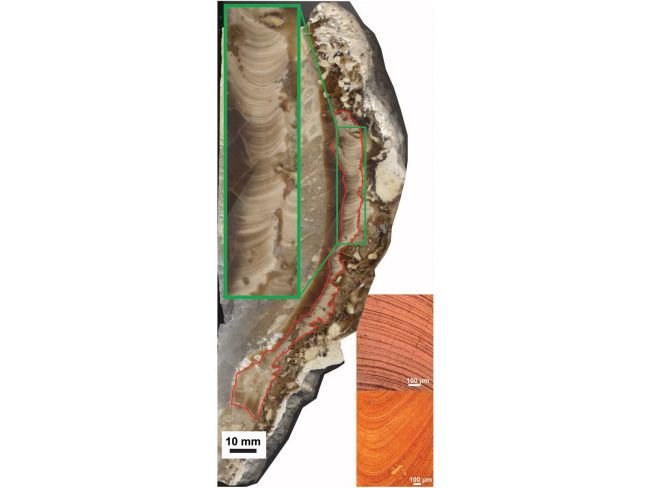
Daily and seasonal layers are visible in a cross section through the specimen of the rudist clam Torreites sanchezi analyzed in the new study. The red box highlights well-preserved parts of the shell. The inserts show microscopic images of the daily laminae which are bundled in groups likely linked to the 14/28 day tidal cycles.
Credit: AGU
In the late Cretaceous, rudists like T. sanchezi dominated the reef-building niche in tropical waters around the world, filling the role held by corals today. They disappeared in the same event that killed the non-avian dinosaurs 66 million years ago.
The new study found the composition of the shell changed more over the course of a day than over seasons, or with the cycles of ocean tides. The fine-scale resolution of the daily layers shows the shell grew much faster during the day than at night
“This bivalve had a very strong dependence on this daily cycle, which suggests that it had photosymbionts,” de Winter said. “You have the day-night rhythm of the light being recorded in the shell.”
See also:
Full Moon And Increase Of Crimes
Hyperion ‘Cosmic Hamburger’: Strange Moon Of Saturn With Even Stranger Craters
Asteroids Have Days And Nights But The Yarkovsky Effect Is Dangerous
What Is The Color Of The Sky On An Exoplanet?
This result suggests daylight was more important to the lifestyle of the ancient mollusk than might be expected if it fed itself primarily by filtering food from the water, like modern-day clams and oysters, according to the authors. De Winter said the mollusks likely had a relationship with an indwelling symbiotic species that fed on sunlight, similar to living giant clams, which harbor symbiotic algae.
The length of a year has been constant over Earth’s history because Earth’s orbit around the Sun does not change. But the number of days within a year has been shortening over time because days have been growing longer. The length of a day has been growing steadily longer as friction from ocean tides, caused by the Moon’s gravity, slows Earth’s rotation.
The pull of the tides accelerates the Moon a little in its orbit, so as Earth’s spin slows, the Moon moves farther away. The moon is pulling away from Earth at 3.82 centimeters (1.5 inches) per year. Precise laser measurements of distance to the Moon from Earth have demonstrated this increasing distance since the Apollo program left helpful reflectors on the Moon’s surface.
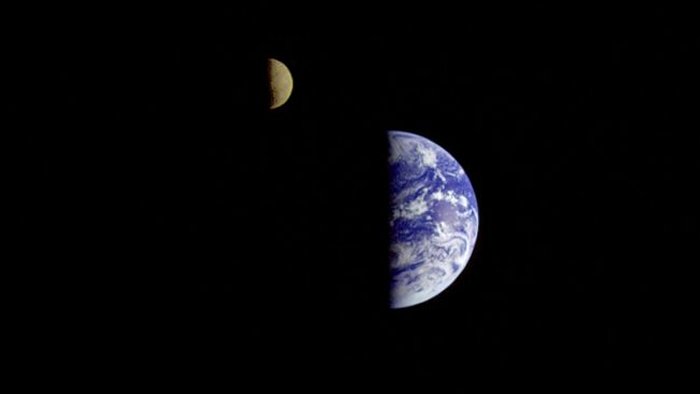
But scientists conclude the Moon could not have been receding at this rate throughout its history, because projecting its progress linearly back in time would put the Moon inside the Earth only 1.4 billion years ago. Scientists know from other evidence that the Moon has been with us much longer, most likely coalescing in the wake of a massive collision early in Earth’s history, over 4.5 billion years ago. So the Moon’s rate of retreat has changed over time, and information from the past, like a year in the life of an ancient clam, helps researchers reconstruct that history and model of the formation of the moon.
Because in the history of the Moon, 70 million years is a blink in time, de Winter and his colleagues hope to apply their new method to older fossils and catch snapshots of days even deeper in time.
Written by Don Wood – MessageToEagle.com Staff





